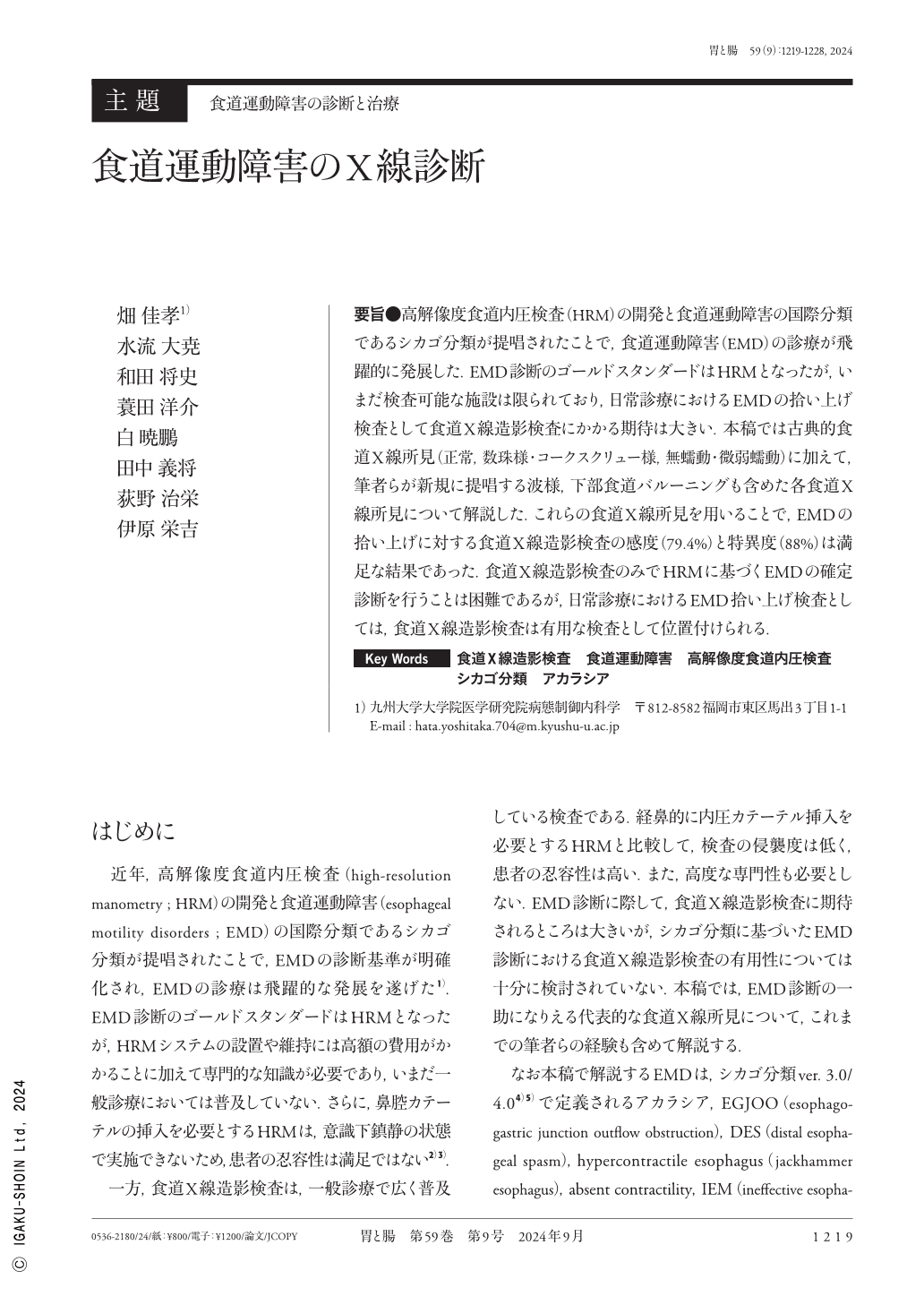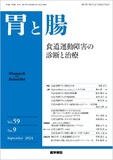Japanese
English
- 有料閲覧
- Abstract 文献概要
- 1ページ目 Look Inside
- 参考文献 Reference
要旨●高解像度食道内圧検査(HRM)の開発と食道運動障害の国際分類であるシカゴ分類が提唱されたことで,食道運動障害(EMD)の診療が飛躍的に発展した.EMD診断のゴールドスタンダードはHRMとなったが,いまだ検査可能な施設は限られており,日常診療におけるEMDの拾い上げ検査として食道X線造影検査にかかる期待は大きい.本稿では古典的食道X線所見(正常,数珠様・コークスクリュー様,無蠕動・微弱蠕動)に加えて,筆者らが新規に提唱する波様,下部食道バルーニングも含めた各食道X線所見について解説した.これらの食道X線所見を用いることで,EMDの拾い上げに対する食道X線造影検査の感度(79.4%)と特異度(88%)は満足な結果であった.食道X線造影検査のみでHRMに基づくEMDの確定診断を行うことは困難であるが,日常診療におけるEMD拾い上げ検査としては,食道X線造影検査は有用な検査として位置付けられる.
The recently developed high-resolution manometry(HRM)together with the Chicago classification, which is the international classification for esophageal motility disorders(EMD)have facilitated and advanced the diagnosis and treatment of EMD. Although HRM has become the gold standard for EMD diagnosis, there is still a paucity of facilities capable of conducting these tests in Japan. Therefore, the barium esophagram(BE)is expected to work as a screening tool for EMD in routine clinical practice. In this article, we explain various BE findings, including conventional(normal, rosary beads/corkscrew appearance, and absent/weak peristalsis)and novel ones that we propose(wave appearance and supra-junctional ballooning). Based on these BE findings, the sensitivity(79.4%)and specificity(88%)for EMD detection were satisfactory. Although it is challenging to make a definitive diagnosis of EMD solely based on BE findings, BE is considered as a useful screening test for EMD in routine clinical practice.

Copyright © 2024, Igaku-Shoin Ltd. All rights reserved.


